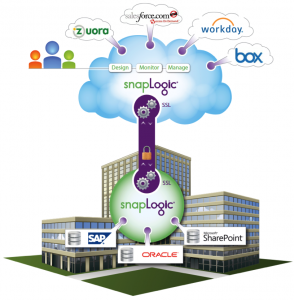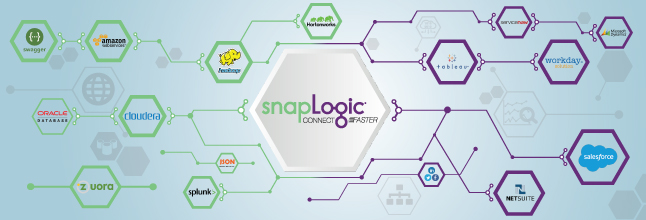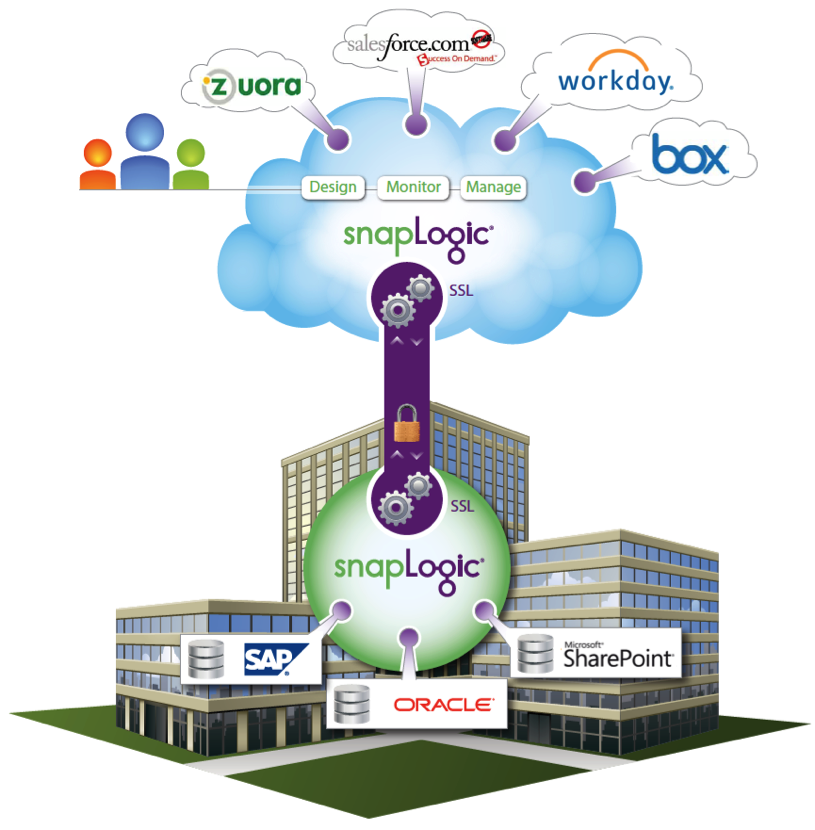A few months ago we published a series about the new hybrid cloud and big data integration requirements. Here’s an update:
 Traditional approaches to data and application integration are being re-imagined thanks to:
Traditional approaches to data and application integration are being re-imagined thanks to:
- Enterprise “cloudification”: Cloud expansion has hit a tipping point and most IT organizations are either running to keep up or trying to get ahead of the pace of this transformation; and
- The need for speed: Cloud adoption and big data proliferation have led to business expectations for self-service and real-time data delivery.
As a result, the concept of integration platform as a service (iPaaS) has gained momentum with enterprise IT organizations who need to connect data, applications, and APIs faster. Typical iPaaS requirements include: an easier- to-use user experience, metadata-driven integrations, pre-built connectivity without coding, data transformation and other ETL operations, and support for hybrid deployments. Here are four additional iPaaS requirements that cannot be ignored.
- Loose Coupling to Manage Change: It is now expected to respond to changing business requirements immediately. These changes result in data changes that impact the integration layer. For example, a new column is added to a table, or a field to an API, to record or deliver additional information. Last generation ETL tools are strongly typed, requiring the developer to define the exact data structures that will be passing through integrations while designing them. Any departure from this structure results in the integration breaking because additional fields are not recognized. This brittle approach can bring today’s agile enterprise to its knees. The right iPaaS solution must be resilient enough to handle frequent updates and variations in stride. Look for “loose coupling” and a JSON-centric approach that doesn’t require rigid dependency on a pre-defined schema. The result is maximum re-use and the flexibly you need for integrations to continue to run even as endpoint data definitions change over time.
- Platform Architecture Matters: Your integration layer must seamlessly transition from connecting on-premises systems to cloud systems (and vice versa) while still ensuring a high degree of business continuity. Many legacy data integration vendors “cloud wash” their solutions by simply hosting their software, or by providing only some aspects of their solution as a multi-tenant cloud service. Some require on-premises ETL or ESB technologies for advanced integration development and administration. When looking at a hybrid cloud integration solution, look under the hood to ensure there’s more than a legacy “agent” running behind the firewall. Look for elastic scale and the ability to handle modern big (and small) data volume, variety, and velocity. And ensure that your iPaaS “respects data gravity” by running as close to the data as necessary, regardless of where it resides.
- Integration Innovation: Many enterprise IT organizations are still running old, unsupported versions of integration software because of the fear of upgrades and the mindset of “if it ain’t broke, don’t fix it.” Cumbersome manual upgrades of on-premises installations are error-prone and result in significant re-development, testing cycles, and downtime. The bigger the implementation, the bigger the upgrade challenge—and connector libraries can be equally painful. Modern iPaaS customers expect the vendor to shield them from as much upgrade complexity as possible. They are increasingly moving away from developer-centric desktop IDEs. Instead, they want self service—browser-based designers for building integrations, and automatic access to the latest and greatest functionality.
- Future Proofing: Many IT organizations are facing the Integrator’s Dilemma, where their legacy data and application integration technologies were built for last decade’s requirements and can no longer keep up. In order to be able to handle the new social, mobile, analytics, cloud, and Internet of Things (SMACT) requirements, a modern iPaaS must deliver elastic scale that expands and contracts its compute capacity to handle variable workloads. A hybrid cloud integration platform should move data in a lightweight format and add minimal overhead; JSON is regarded as that compact format of choice when compared to XML. A modern iPaaS should also be able to handle REST-based streaming APIs to continuously feed into an analytics infrastructure, whether it’s Hadoop, a cloud-based or traditional data warehouse environment. With iPaaS, data and application integration technologies are being re-imagined so don’t let legacy, segregated approaches be a barrier to enterprise cloud and big data success. Cloud applications like Salesforce and Workday continue to fuel worldwide software growth, while infrastructure as a service (IaaS) and platform as a service (PaaS) providers offer customers the flexibility to build up systems and tear them down in short cycles.










